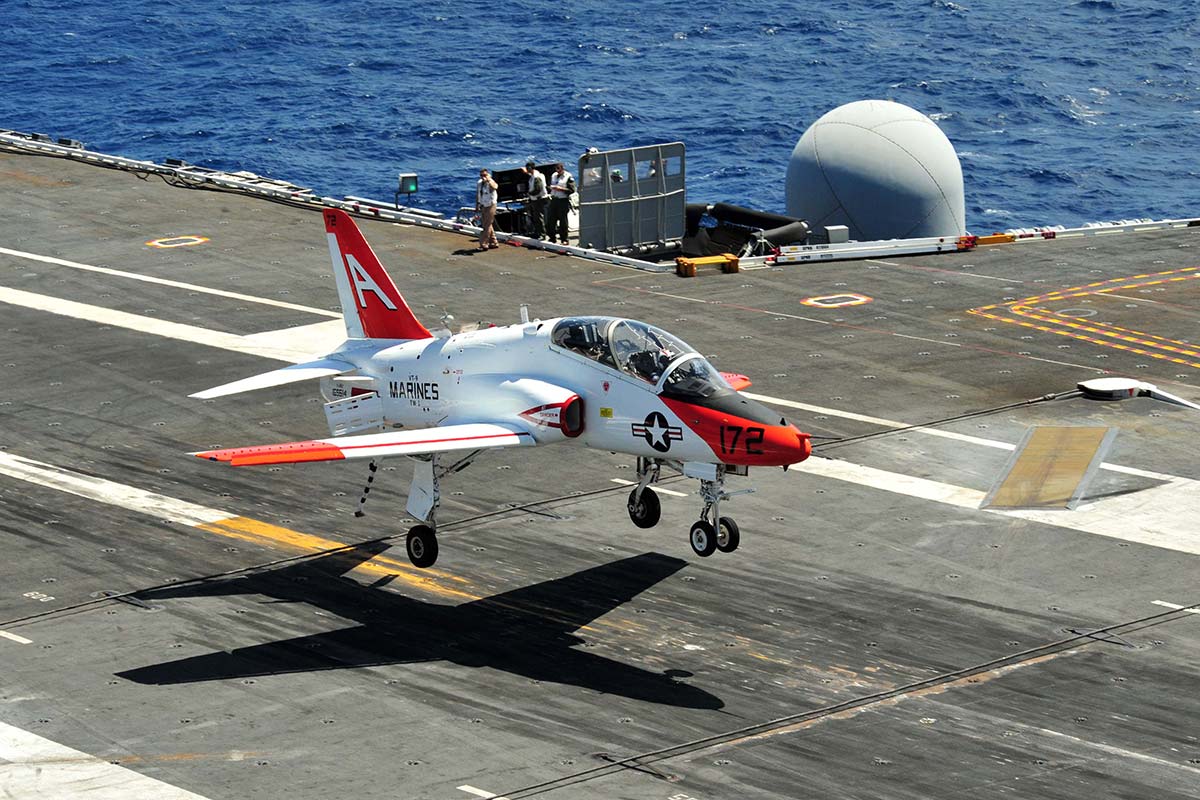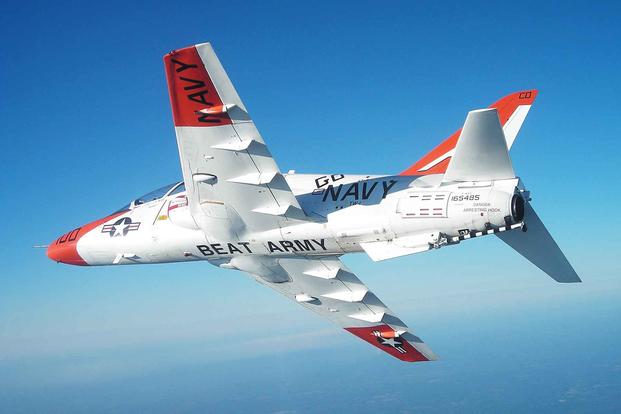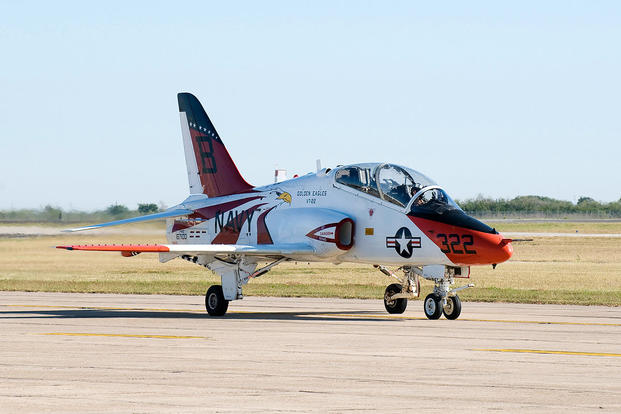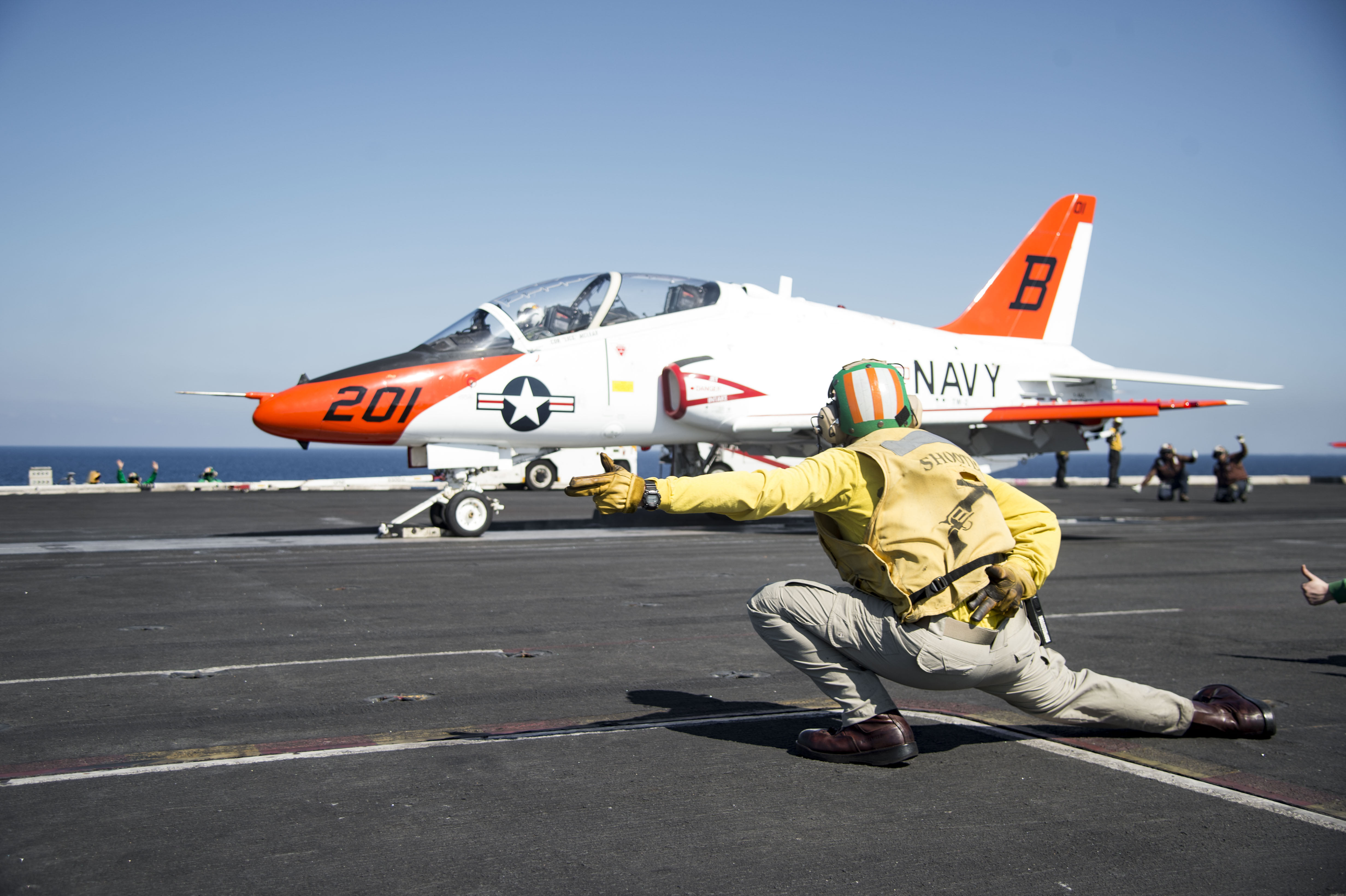The Navy’s T-45C Goshawk training jet fleet has been temporarily grounded since last week, following an incident during takeoff a few days ago. This suspension has significantly impacted pilot training. In a statement released on Tuesday, the Navy announced that the Chief of Naval Air Training placed the Navy and Marine Corps’ fleet of T-45Cs on a safety pause on October 14 to review an engine blade fault.

According to Navy spokeswoman Elizabeth Fahrner, the issue with the blades came to light when a T-45C taking off from Naval Air Station Kingsville in Texas experienced a low-pressure compressor blade failure on October 11.
As a consequence of the grounding, there has been a substantial loss in production for both student naval aviators and student naval flight officers. Navy leaders have emphasized that this decision was made out of an abundance of caution and concern for the safety of their aviators.

Rear Adm. John Lemmon, who oversees the Navy’s tactical Aircraft Programs, mentioned in the Navy’s statement that four commands have been working tirelessly with industry partner Rolls-Royce to identify the root cause of the recent T-45 engine blade failure. He also noted that engineering analysis is ongoing and will continue until the T-45 fleet can be safely returned to active service. It’s worth noting that the aircraft is powered by a single Rolls-Royce turbofan engine.
In the meantime, Fahrner explained that training air wings and squadrons are working to maximize ground training, including classroom lectures, simulators, and computer-based training for student pilots.

The T-45 has been a vital part of the Navy’s training program for over 30 years, and the version currently grounded has been in service since 1997. This safety pause is not the first in the aging jet’s history. In 2017, around 100 T-45 instructor pilots refused to fly in the jet due to concerns over the aircraft’s oxygen supply, leading to a temporary pause in T-45 training flights. In 2020, officials reported a significant reduction in the number of physiological episodes in the jet, although the root cause of the problem was never identified.

There have been reports of discussions between the Navy and Boeing regarding the replacement of the Goshawk fleet with Boeing’s newer T-7A Red Hawk jet. However, no formal decisions have been announced to date.
The Navy has not provided an estimate for when the T-45 fleet will return to service. The safety of aviators remains the top priority as efforts continue to resolve the issue and safely resume training operations.

Close





